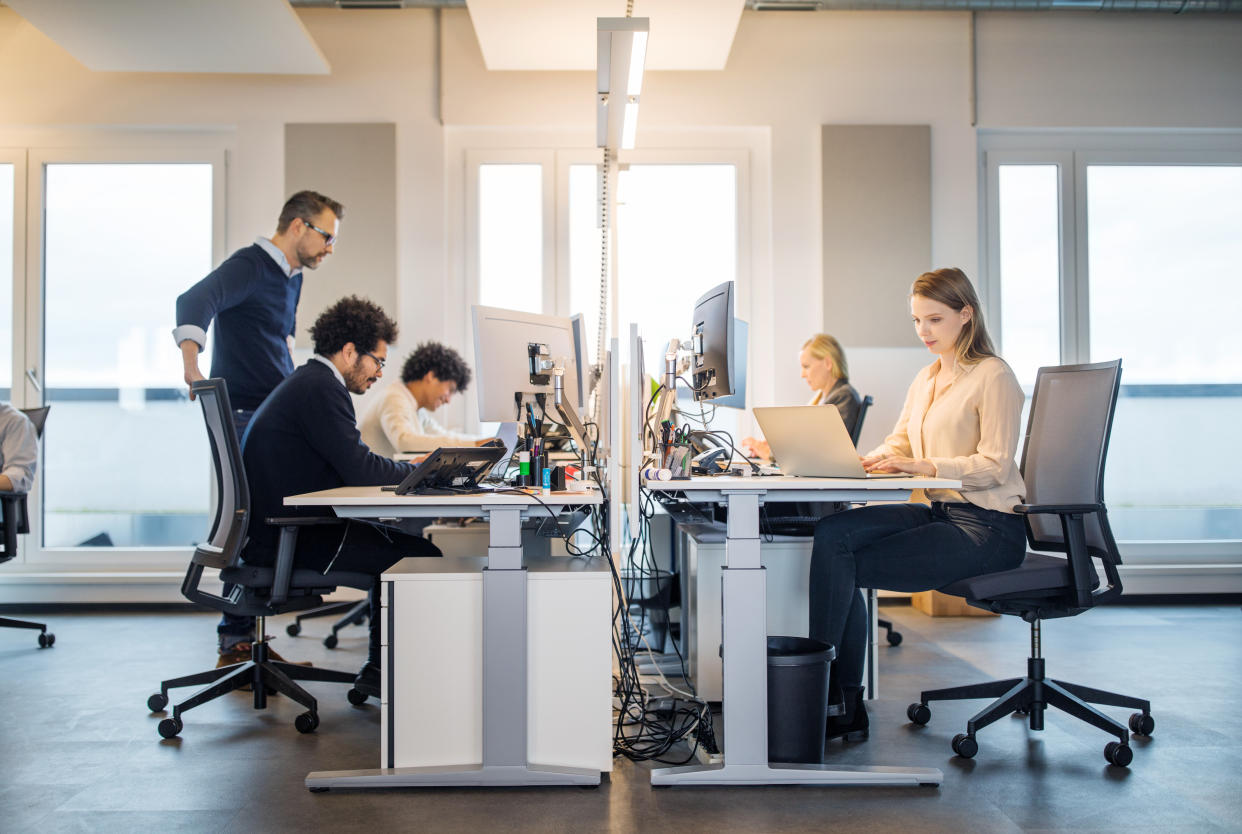Why offices will still exist in the post-lockdown working world

In recent weeks, we’ve had huge debates about the future of work - and whether offices will be a thing of the past. Large shocks often pave the way for significant societal changes and the coronavirus pandemic is no exception.
Since March, the way we work has transformed - with many describing it as a “remote working revolution” because of the thousands of employers forced to trial home-working for the first time.
Morgan Stanley (MS), Barclays (BARC.L), Thomson Reuters (TRI), Vodafone (VOD.L), HSBC (HSBA.L), Twitter (TWTR) and Unilever (ULVR.L) have all announced they would be expanding working-from-home opportunities for staff.
In April, Barclays CEO Jes Staley said the pandemic could permanently change how many people head into city centre offices. “There will be a long-term adjustment in how we think about our location strategy — the notion of putting 7,000 people in a building may be a thing of the past,” he said.
While some people can’t wait to return to their desks, others are hoping they will be offered the option of flexible working post-COVID-19. According to research by CIPD, employers expect the proportion of people working from home on a regular basis to increase to 37% after the pandemic, compared to 18% before.
READ MORE: Why ‘boreout’ is on the rise in the workplace
But is the traditional office setting really a thing of the past - and do people want to return to workspaces when the pandemic is finally over?
The arguments for embracing remote work full-time are strong. Premium office spaces in big cities are hugely expensive - and many businesses are already struggling financially because of the lockdown.
Commuting is time-consuming and somewhat more risky than working from your kitchen, considering the pandemic is far from over. Employers may also benefit from increased productivity, job satisfaction and engagement among workers who have found a better work/life balance.
Despite this, it’s unlikely that offices are going to disappear overnight. Earlier this year, Facebook announced that half of its workforce is expected to work remotely over the next five to ten years. But this week, the social media giant secured one of the biggest leases of the year - 730,000 square feet at the James A. Farley Building in Manhattan, New York.
While the COVID-19 crisis has demonstrated that a large number of jobs can be successfully done remotely, the fact remains that some can’t. And not everyone wants to work from home, too.
READ MORE: What happens to furloughed workers when the government scheme ends?
Although a privileged few have home offices to work from, people sharing apartments with housemates and living in studio flats may find it harder to set up a comfortable and quiet space to work. Working from home can also make it a challenge to switch off and keep your work and personal lives separate.
From a corporate point of view, it can be hard to build a workplace culture without a physical office. And while many people would rather work from their sofa than a corporate cubicle for eight hours a day, there’s still something to be said for the companionship of working alongside colleagues and hearing chatter in the background. Spending hours at home - even with the comfort of a pet - can be cripplingly lonely without a co-worker to go on a coffee run with.
So what’s the answer? For many workers, the option to do their jobs remotely part-time would be ideal. According to a poll of more than 600 professionals by Stanton House, over 70% now want to work in the office less than two days per week in the future.
Less than a third (29%) would prefer to work three days or more per week in the office, and only four percent would like to go back to four days plus per week.
And while offices will still exist, experts predict they will be very different to the ones we commuted to pre-COVID. It’s unlikely that thousands of people will be working from one building at the same time, particularly with social distancing regulations. Instead, the office may well become a base for workers to meet a couple of times a week for core functions. We might be fed up with Zoom meetings, but they’re likely to be the norm for the foreseeable future.



